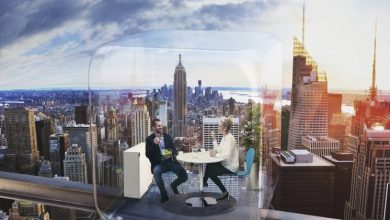The 4 Elements Needed to Qualify for Depreciation

Depreciation—it’s a critical tax term for landlords, but one that’s often misunderstood.
Unfortunately, this means missing out on a key tax advantage: depreciation deductions.
Depreciation deductions can save you hundreds throughout your investing career and is one of the most valuable tax rental property deductions available for landlords. In fact, the IRS will always assume you took depreciation deductions, so skipping them will only hurt you in the long run.
For these reasons, it’s crucial that you learn about depreciation. First, however, you need to know how to apply it. So, what can you depreciate?
Here are the four elements you need to qualify for depreciation deductions.
1. Long-Term Property
The first criterium for depreciation is that the property is a long-term, or capital, asset. Specifically, the property must last longer than one year.
Here are a few examples of long-term, depreciated property:
- Buildings
- Cars
- Dishwashers
- Kitchen appliances
- Lawn mowers
- Furniture
This one-year requirement distinguishes capital assets from operating expenses, which last less than a year. Operating expenses are deducted separately, and usually their entire cost may be deducted in a single year.
The following are examples of operating expenses, which are NOT depreciated:
- Gas
- Food
- Cleaning supplies
- Fertilizer
Operating expenses are not depreciated because if they only last one year, there’s no point in claiming depreciation deductions over the course of several years.
2. Decays or Gets Used Up
The second depreciation criterium is that the property must decay, wear out, or get used up over time. In other words, the property—in theory—must decline in value over time.
Depreciation deductions are the method of regaining tax dollars to compensate for this ongoing, decline in value of your capital assets over time.
For example, carpets become stained and matted over time, appliances slowly become dented and ineffective, and pools require more maintenance the older they get.
To reflect this slow decline, landlords claim depreciation deductions over the course of the property’s lifespan. Each type of long-term property adheres to a rental property depreciation schedule determined by the IRS. For example, buildings are depreciated over 27.5 years while personal property is usually depreciated between three and five years.
What happens if your long-term property doesn’t lose value over time? Some types of property—like buildings—appreciate over time as you improve them. Yet the IRS still treats buildings as if they are losing value and allows you take depreciation deductions. How does this work?
The answer is another key tax concept you should know: rental property depreciation recapture.
The IRS allows you to take depreciation deductions on your rental property on the schedule outlined in the tax code. However, when you eventually sell your property, the revenue you generated because of those deductions will be taxed at a slightly higher rate than capital gains normally would be. In this way, the IRS “recaptures” the amount they lost by allowing you to take depreciation deductions all this time.
3. One-Year Ownership
The third requirement for depreciation is one-year ownership. You must own the property you’re depreciating for at least one year to take the deductions.
This requirement applies whether you borrowed money to purchase the property or paid for it outright. For instance, if you got a loan from the bank to buy a property and put 20% down on the purchase, you still own that building in the eyes of the IRS. Therefore, you can take depreciation deductions once you’ve hit the one-year mark.
4. Rental Business Use
Finally, property you depreciate must be used for your rental business, not personal use.
Occasionally, you might use a capital asset for both your rental business and your personal use. For example, you might use a lawn mower for both your rental lawns and your own lawn. Similarly, you may use your car to drive to and from your rental units for maintenance activities in addition to your personal, daily travel needs.
In these cases, you can still depreciate the property—but only a percentage equal to the portion you use it for your rental business. So for example, if you use your lawn mower for your tenants’ lawns 80% of the time and your own lawn 20% of the time, you may only take depreciation deductions for 80% of the cost of the lawn mower.
Conclusion
Depreciation deductions give you access to more cash in the short-term so you can invest it back into your growing business. They are well worth your time and energy to understand. By investing yourself in the nuances of depreciation, you can save both your time and money when tax season arrives.




